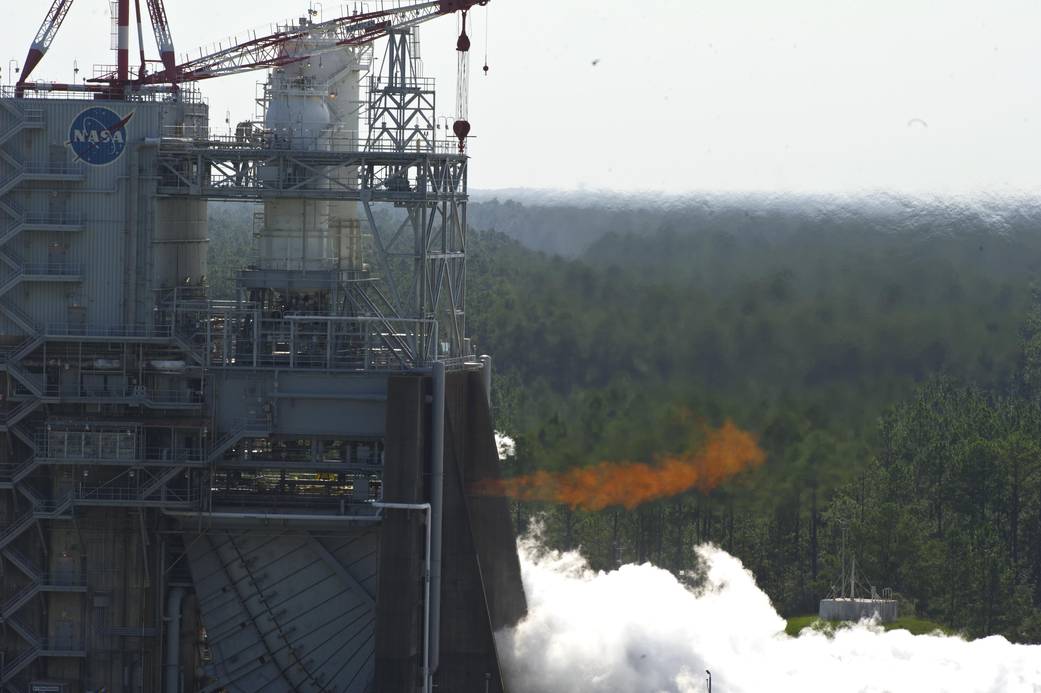
As Olympic athletes converge on London with dreams of winning gold in the 2012 Summer Olympic Games, NASA is also setting records while testing the J-2X powerpack at the Stennis Space Center. The first time was June 8, when engineers went the distance and set the Test Complex A record with a 1,150-second firing of the developmental powerpack assembly. On July 24, engineers surpassed that record with a 1,350-second test of the engine component on the A-1 Test Stand at Stennis. The powerpack is a system of components on the top portion of the J-2X engine. On the complete J-2X engine, the powerpack feeds the thrust chamber, which produces the engine fire and thrust. The advantage of testing the powerpack without the thrust chamber is to operate over a wide range of conditions to understand safe limits.
The July 24 test specifically gathered data on performance of the liquid oxygen and fuel pumps during extreme conditions. The test data provides critical information for continued development of the turbopump for use on the J-2X engine, the first human-rated liquid oxygen and liquid hydrogen rocket engine to be developed in four decades. The J-2X is being built by Pratt & Whitney Rocketdyne for NASA’s Marshall Space Flight Center in Huntsville, Ala.
The J-2X engine will power the upper-stage of a planned two-stage Space Launch System, or SLS. The SLS will launch NASA’s Orion spacecraft and other payloads, and provide an entirely new capability for human exploration beyond low Earth orbit. Designed to be safe, affordable and flexible for crew and cargo missions, the SLS will continue America’s journey of discovery and exploration to destinations including nearby asteroids, Lagrange points, the moon and ultimately, Mars.Image Credit: NASA/SSC


























